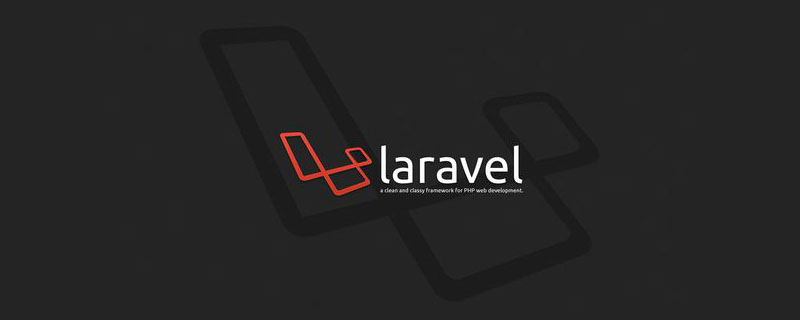The following tutorial column will introduce to you how to use Laravel to send an email "across the ocean". I hope it will be helpful to friends in need!
Email has greatly improved people's efficiency since its birth. Traditional The green mailbox method of sending letters has been replaced by bundles of communication messages transmitted on fiber optic cables. E-mail also brings the intrusion of spam messages. With the popularity of domestic social APPs, e-mails are gradually becoming more professional.
In this issue, we will not talk about how to send an email. Let’s first prepare a form and prepare the data required for the email.
Create Form form
First use the command line to create a restful style controller:
php artisan make:controller ContactControllerThen routes/web.php Register the resource class routing address in the routing file:
Route::get('contact', 'ContactController@create')->name('contact.create'); Route::post('contact', 'ContactController@store')->name('contact.store');We first implement the create method to render the view of the form:
namespace App\Http\Controllers;use Illuminate\Http\Request;
use App\Http\Requests;
class ContactController extends Controller {
public function create()
{
return view('contact.create');
} Then use the FormBuilder we talked about to create A form for sending an email. The main fields are
name: the sender’s name
- email: the recipient’s email address
- msg: Email content
- The following are the input fields of the form in the view file:
{!! Form::open(['route' => 'contact.store']) !!}<p class="form-group"> {!! Form::label('name', 'Your Name') !!} {!! Form::text('name', null, ['class' => 'form-control']) !!}</p><p class="form-group"> {!! Form::label('email', 'E-mail Address') !!} {!! Form::text('email', null, ['class' => 'form-control']) !!}</p><p class="form-group"> {!! Form::textarea('msg', null, ['class' => 'form-control']) !!}</p>{!! Form::submit('Submit', ['class' => 'btn btn-info']) !!}{!! Form::close() !!}Note that the form is wrapped in Between open
close
.Verify data
After the form is created, we need to write a method to receive the form data. Before receiving and processing, the data must be valid sex to verify. Remember what we talked about earlier, using the FormRequest object to validate form fields.
Create a form validator on the command line:php artisan make:request ContactFormRequestIn order to simplify the logic, we need to add all the code that calls the validator, and force verification regardless of any permissions. Modify the
authorize
method:public function authorize(){
return true;} Then define the verification rules, the built-in rules are enough: public function rules(){
return [
'name' => 'required',
'email' => 'required|email',
'msg' => 'required'
];}##Combined
With the form submitted and the validator, we then need to process the data and write it to the database. Write the following code in the store method of the controller ContactController.
Introduce the validator in the header: use App\Http\Requests\ContactFormRequest;
Use dependency injection to call: public function store(ContactFormRequest $request){
$contact = [];
$contact['name'] = $request->get('name');
$contact['email'] = $request->get('email');
$contact['msg'] = $request->get('msg');
// 邮件发送逻辑代码
return redirect()->route('contact.create');}
Sending emails is a matter of integrating the operating system and the application program. The logic code for sending emails in the third section above will be given in the next article. Although this article is small, it describes all aspects from form to verification to data interaction, from which you can understand the laravel processing process.
The above is the detailed content of Teach you to use Laravel to send an email that 'crosses the ocean'. For more information, please follow other related articles on the PHP Chinese website!
 laravel单点登录方法详解Jun 15, 2022 am 11:45 AM
laravel单点登录方法详解Jun 15, 2022 am 11:45 AM本篇文章给大家带来了关于laravel的相关知识,其中主要介绍了关于单点登录的相关问题,单点登录是指在多个应用系统中,用户只需要登录一次就可以访问所有相互信任的应用系统,下面一起来看一下,希望对大家有帮助。
 一起来聊聊Laravel的生命周期Apr 25, 2022 pm 12:04 PM
一起来聊聊Laravel的生命周期Apr 25, 2022 pm 12:04 PM本篇文章给大家带来了关于laravel的相关知识,其中主要介绍了关于Laravel的生命周期相关问题,Laravel 的生命周期从public\index.php开始,从public\index.php结束,希望对大家有帮助。
 laravel中guard是什么Jun 02, 2022 pm 05:54 PM
laravel中guard是什么Jun 02, 2022 pm 05:54 PM在laravel中,guard是一个用于用户认证的插件;guard的作用就是处理认证判断每一个请求,从数据库中读取数据和用户输入的对比,调用是否登录过或者允许通过的,并且Guard能非常灵活的构建一套自己的认证体系。
 laravel中asset()方法怎么用Jun 02, 2022 pm 04:55 PM
laravel中asset()方法怎么用Jun 02, 2022 pm 04:55 PMlaravel中asset()方法的用法:1、用于引入静态文件,语法为“src="{{asset(‘需要引入的文件路径’)}}"”;2、用于给当前请求的scheme前端资源生成一个url,语法为“$url = asset('前端资源')”。
 实例详解laravel使用中间件记录用户请求日志Apr 26, 2022 am 11:53 AM
实例详解laravel使用中间件记录用户请求日志Apr 26, 2022 am 11:53 AM本篇文章给大家带来了关于laravel的相关知识,其中主要介绍了关于使用中间件记录用户请求日志的相关问题,包括了创建中间件、注册中间件、记录用户访问等等内容,下面一起来看一下,希望对大家有帮助。
 laravel中间件基础详解May 18, 2022 am 11:46 AM
laravel中间件基础详解May 18, 2022 am 11:46 AM本篇文章给大家带来了关于laravel的相关知识,其中主要介绍了关于中间件的相关问题,包括了什么是中间件、自定义中间件等等,中间件为过滤进入应用的 HTTP 请求提供了一套便利的机制,下面一起来看一下,希望对大家有帮助。
 laravel的fill方法怎么用Jun 06, 2022 pm 03:33 PM
laravel的fill方法怎么用Jun 06, 2022 pm 03:33 PM在laravel中,fill方法是一个给Eloquent实例赋值属性的方法,该方法可以理解为用于过滤前端传输过来的与模型中对应的多余字段;当调用该方法时,会先去检测当前Model的状态,根据fillable数组的设置,Model会处于不同的状态。
 laravel路由文件在哪个目录里Apr 28, 2022 pm 01:07 PM
laravel路由文件在哪个目录里Apr 28, 2022 pm 01:07 PMlaravel路由文件在“routes”目录里。Laravel中所有的路由文件定义在routes目录下,它里面的内容会自动被框架加载;该目录下默认有四个路由文件用于给不同的入口使用:web.php、api.php、console.php等。


Hot AI Tools

Undresser.AI Undress
AI-powered app for creating realistic nude photos

AI Clothes Remover
Online AI tool for removing clothes from photos.

Undress AI Tool
Undress images for free

Clothoff.io
AI clothes remover

AI Hentai Generator
Generate AI Hentai for free.

Hot Article

Hot Tools

SAP NetWeaver Server Adapter for Eclipse
Integrate Eclipse with SAP NetWeaver application server.

SublimeText3 Linux new version
SublimeText3 Linux latest version

MinGW - Minimalist GNU for Windows
This project is in the process of being migrated to osdn.net/projects/mingw, you can continue to follow us there. MinGW: A native Windows port of the GNU Compiler Collection (GCC), freely distributable import libraries and header files for building native Windows applications; includes extensions to the MSVC runtime to support C99 functionality. All MinGW software can run on 64-bit Windows platforms.

WebStorm Mac version
Useful JavaScript development tools

VSCode Windows 64-bit Download
A free and powerful IDE editor launched by Microsoft






